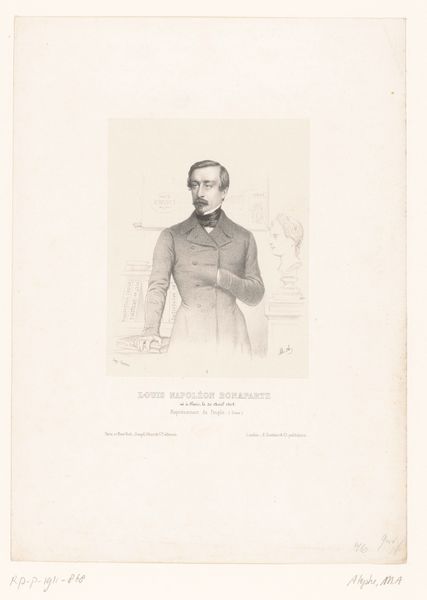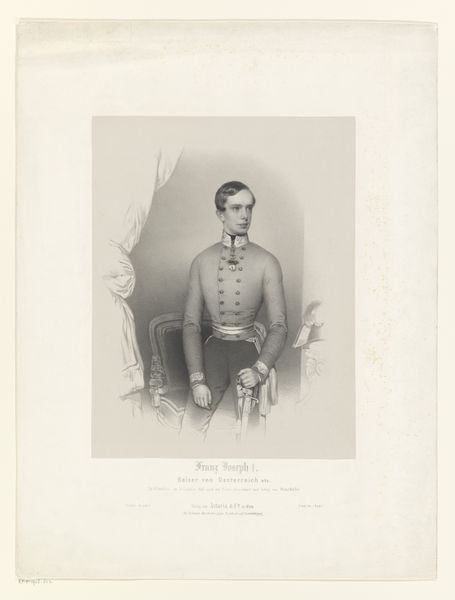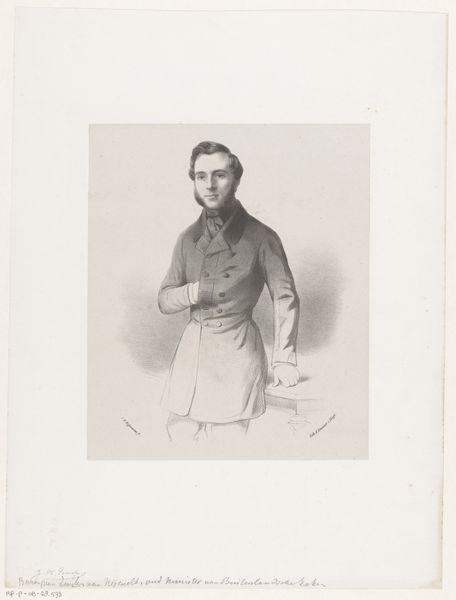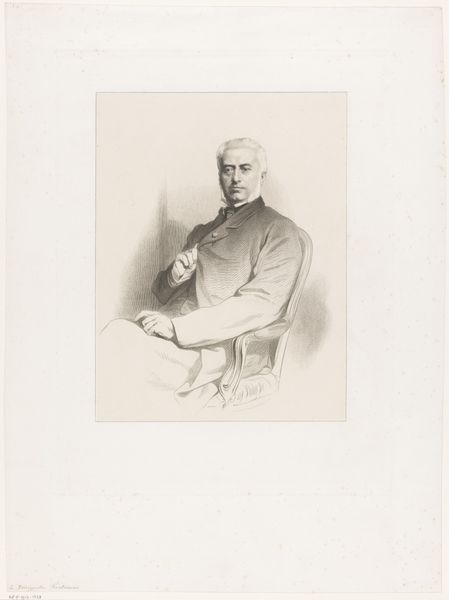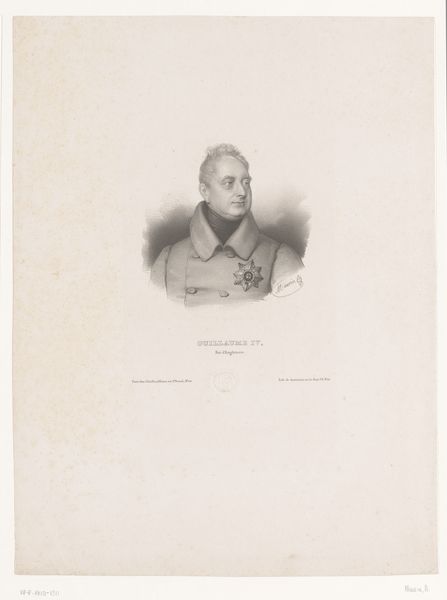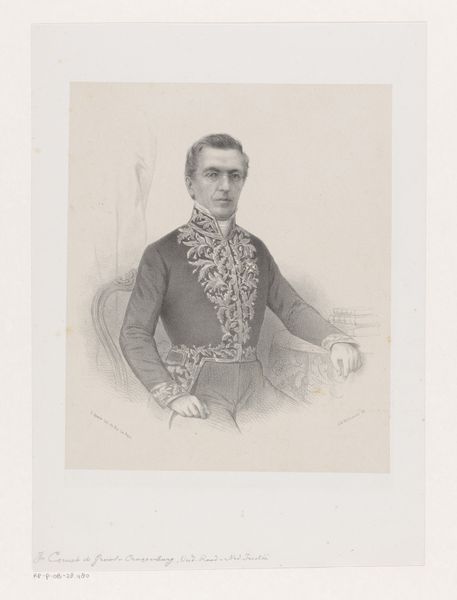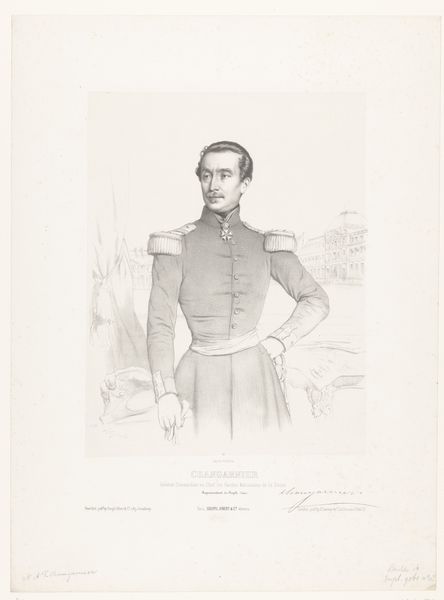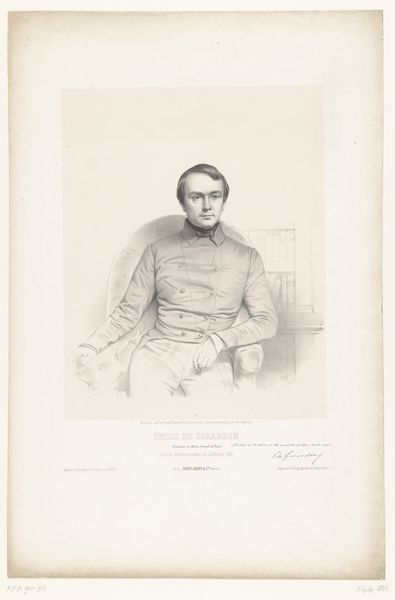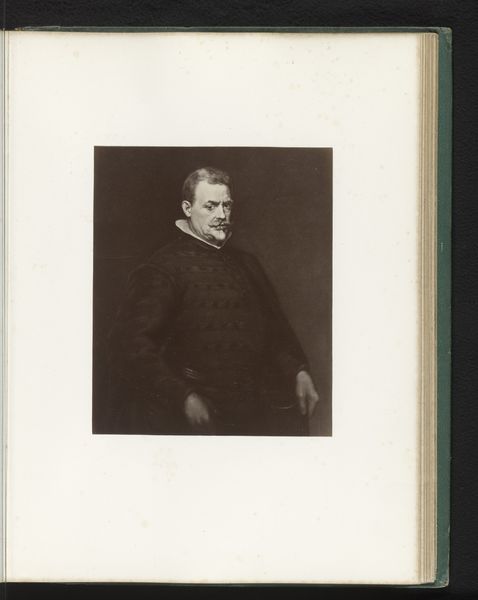
drawing, print, engraving
#
portrait
#
drawing
# print
#
figuration
#
form
#
historical fashion
#
romanticism
#
19th century
#
line
#
history-painting
#
northern-renaissance
#
academic-art
#
engraving
Dimensions: height 560 mm, width 426 mm
Copyright: Rijks Museum: Open Domain
This is a portrait of Paul Delaroche, made by Charles Baugniet using lithography. The grainy texture and tonal range are achieved through the manipulation of greasy crayon on a stone matrix, a process that requires significant skill and control. Consider how the artist captures the nuances of light and shadow, creating depth and form with what is essentially a very manual printing process. Look closely, and you will see a contrast between the smooth areas and the more textured passages, achieved through varying pressure and technique. Lithography was a key technology for mass media, allowing images to be reproduced and disseminated widely. It democratized image-making, offering a means of visual communication beyond traditional painting. The act of printing transforms artistic creation into an industrial enterprise. Understanding this interplay between art, labor, and consumption is crucial to understanding the significance of this portrait and its place in art history, blurring the lines between fine art and craft.
Comments
No comments
Be the first to comment and join the conversation on the ultimate creative platform.

